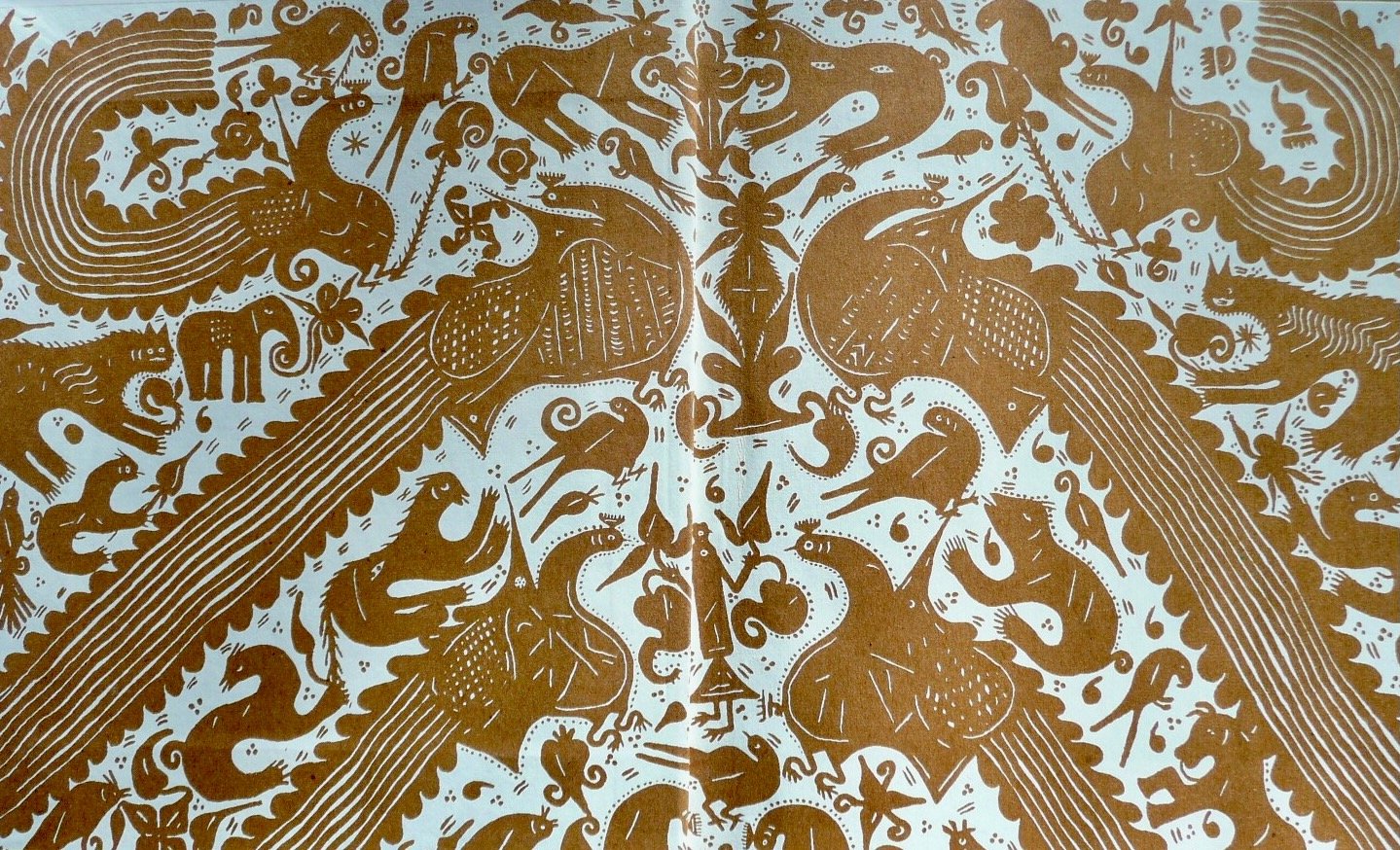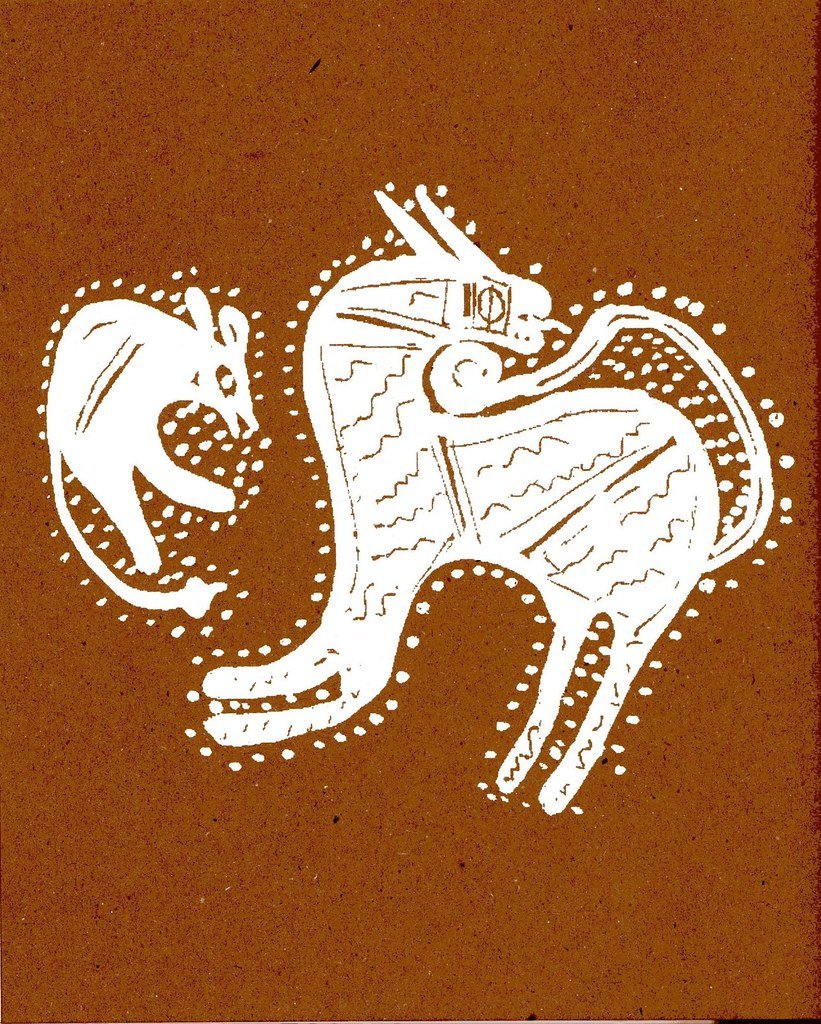
Nurturing Walls: The Art of the Meena Women
For generations, the women of the Meena tribe in Rajasthan, India, have decorated the walls and floors of their homes with a stunning form of graphic and decorative art known as Mandana. Using a white paste made of rice and milk, they paint intricate motifs on the brown mud surfaces of the homes in the village. This remarkable craft is passed down from mother to daughter, and the drawings themselves often depict maternal motifs of birds and animals with their young.
By its very design and intent, this art had never been seen outside the context of Meena villages. What is more, there was no record of the work. Intended to be constantly renewed, old works grow dull, are painted over, and a new one takes its place. Nervous about approaching this with a colonial, documentary spirit, I and my colleagues began a dialogue with Madan Meena, a member of the community, who began to approach the women to ask if they may be interested in recording their art for posterity in the form of a book and a touring exhibition. There was an overwhelmingly positive response to this, and a delight in the acknowledgement of their craft.
The exhibition displayed original artworks created for the first time on canvas and paper, as well as silk-screened prints that replicated the wall drawings. It contextualized the Mandana artwork in its place in the local community, speaking to a kind of authenticity foreign to our culture of conjoined art and commerce.
Over the course of three decades Rebecca Hossack Gallery in the heart of Fitzrovia, London has built an international reputation for innovation, individuality, energy and excellence. Rebecca Hossack has been a great champion of Non-Western artistic traditions.
“A tender tribute to the Mandana tradition of public art and the women who make it.” - Maria Popova, The Atlantic




